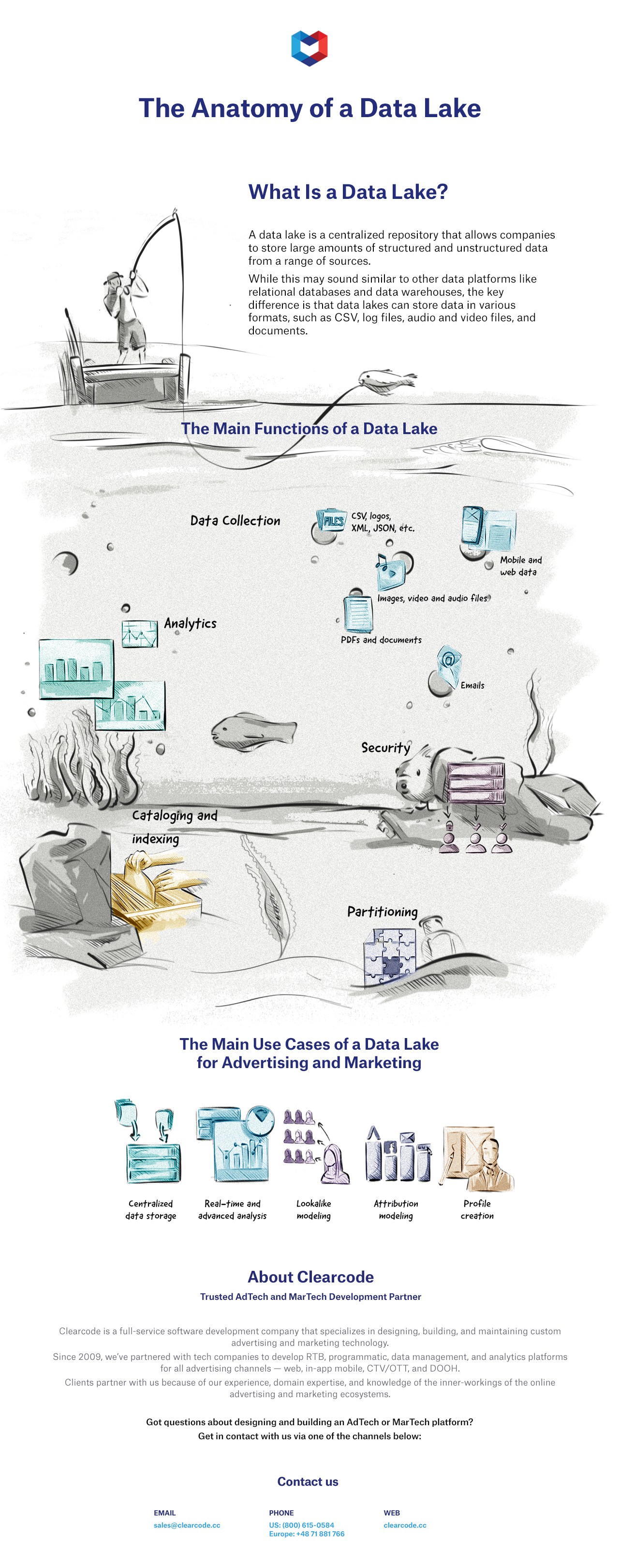Ever since the beginning of digital advertising and marketing, data has played a key role in the creation and optimization of campaigns.
While data platforms like DMPs and CDPs provide many data-management functionalities, adding a data lake to your tech stack can provide you with many more business advantages.
Check out our infographic below to find out what components make up a data lake:

What Is a Data Lake?
A data lake is a centralized repository that allows companies to store large amounts of structured and unstructured data from a range of sources.
While this may sound similar to other data platforms like relational databases and data warehouses, the key difference is that data lakes can store data in various formats, such as CSV, log files, audio and video files, and documents.
Relational databases and data warehouses can only store data in a given schema/format (e.g. CSV), which makes a data lake useful for companies that collect different types of data in different formats.
Data collected in a data lake can then be transformed and analyzed, as well as passed to other systems like data management platforms (DMPs) and CDPs.
What Are The Key Functions of a Data Lake?
Security: Restrict and grant access to specific people from one place.
Analysis: Run real-time analysis and reports, as well as apply machine learning models to the data to forecast likely outcomes and predict future actions.
Cataloging and indexing: It provides easy to understand content via cataloging and indexing.
Partitioning: Proper partitioning speeds up and reduces the cost of data retrieval and analysis.
Use Cases of a Data Lake for AdTech & MarTech
Centralized data storage: Data systems like DMPs, CDPs, data warehouses and relational databases only allow you to store data in a given format, e.g. CSV. With a data lake, you can store many different types of data in different formats, e.g. CSV, log files, and documents. This not only allows you to have a truly centralized location for all your data but you can also store more data for a lower cost.
Real-time and advanced analysis: Having all your data in one place allows you to run real-time analysis via structured streaming (available with Amazon Glue) and querying tables (e.g. using Amazon Athena). You can also apply machine learning algorithms to the data in a data lake to run advanced analytics.
Look-alike modeling: You can use the data in a data lake to create look-alike models. While you can create look-alike models in DMPs and CDPs, creating them via a data lake will give you more data to work with.
Attribution modeling: Creating attribution models with data stored in a data lake allows you to analyze data from more sources, compared to other data platforms.
Profile creation: With a data lake, you can not only create more user profiles than you could using other data platforms, but also enrich these profiles with more data.








